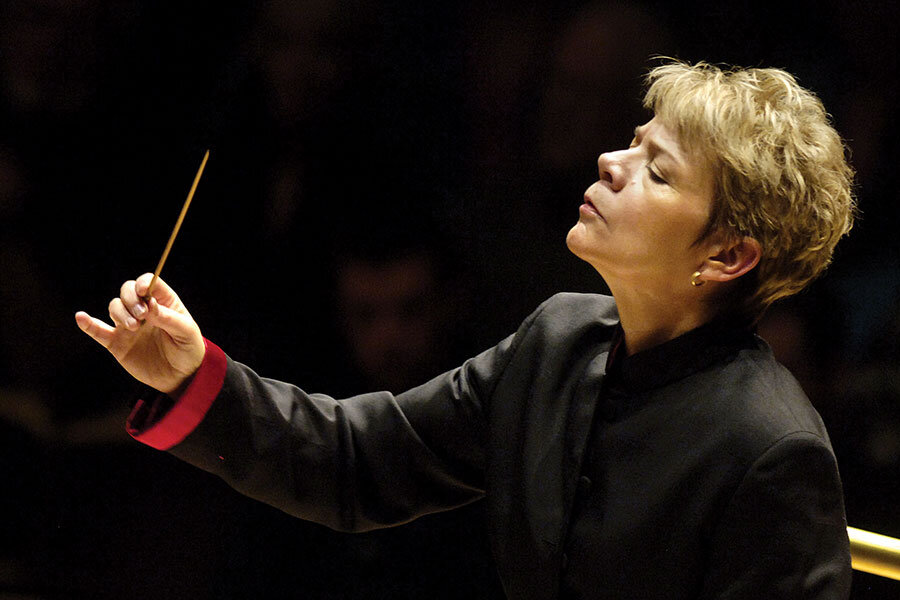Women conductors shine
Loading...
When Marin Alsop lifts her baton, she often makes history. In 2007, when she was appointed music director of the Baltimore Symphony Orchestra, she was the first woman to hold this position with a major American orchestra, and remains the only one. In 2013, she was the first woman to conduct the Last Night of the Proms, the culminating performance of the prestigious British summer series.
“For every piece, I feel like she ... [makes] sure that new ideas really have a chance to exist properly for the first hearing,” says violinist Nicolas Kendall of the string trio Time for Three, who has worked with Ms. Alsop at both the Cabrillo Festival of Contemporary Music and Carnegie Hall.
Female musicians have a strong presence in the world’s leading orchestras, but a woman on the conductor’s podium is still seen as a relatively new idea. In the United States, women constitute less than 20 percent of the League of American Orchestras’ conductor membership.
In an effort to support the next generation of conductors, The Dallas Opera is launching The Linda and Mitch Hart Institute for Women Conductors on Nov. 28. The weeklong program for six musicians 40 years and younger will culminate with a public concert at the Winspear Opera House following a rigorous schedule of classes, coaching, and conducting the Dallas Opera Orchestra.
Among the rising generation of conductors many continue to progress in burgeoning careers.
Susanna Mälkki – who performed as a recent guest conductor for the San Francisco Symphony with such fluidity that her baton seemed to float – will become the chief conductor of the Helsinki Philharmonic Orchestra for the 2016-17 season.
Los Angeles Philharmonic assistant conductor Mirga Gražinyte-Tyla is poised to be promoted to associate conductor next season. Leading the orchestra at the famed Hollywood Bowl in late August, she alternately displayed disciplined precision and bold expressiveness in her technique.
Each of these three conductors will be taking her place among the constellation of 11 women conductors who have been invited to next summer’s Lucerne Festival (Aug. 12 to Sept. 11) in Switzerland. Next year’s theme? “PrimaDonna.”







